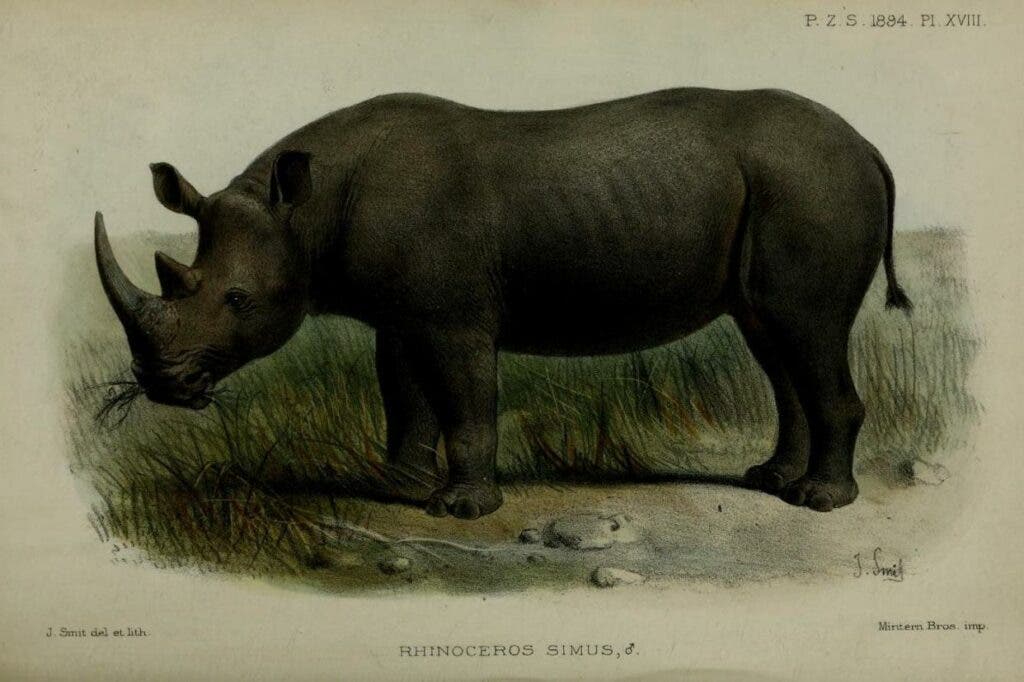Rhinoceros horns seem to have become significantly shorter over the past 130 years, and poaching is likely to blame. Researchers have studied archive images of the animals and found the size of the horn, relative to its body length, has decreased over time, as has also happened to elephants and wild sheep.

They once roamed across many places throughout Europe, Asia, and Africa, but rhinos are now on the verge of extinction, largely because of poachers going after their horns. Less than 30,000 rhinos remain in the wild, a big drop from the 500,000 at the beginning of the 20th century. Very few can survive outside of natural parks or natural reserves, and the pressure is constantly growing.
Poaching is a big business, with well-organized criminal gangs that track and kill rhinos. A rhino horn can be sold on the black market at an incredible rate of $200,000, even though their trade is banned under the Convention on International Trade in Endangered Species (CITES). The demand for rhinos on the black market is high, especially as horns are also used in traditional Asian medicine.
“Preferential hunting selection for individuals with larger horns or tusks resulted in individuals with smaller features surviving and reproducing more, passing on these traits to future generations, and resulting in an evolutionary change,” the researchers write. “These results are the first suggestion of a decline in horn length in rhinos.”
Rhinos and horn length
As rhino horns are so valuable, even museum species are kept away and are difficult to access for research purposes. That’s why Oscar Wilson, a researcher at the University of Helsinki, and his colleagues instead analyzed 80 photographs of living rhinos, dating from 1886 to 2019, which had been uploaded to the Rhino Resource Center database.
The team used image software to estimate various anatomical measurements for each of the animals in the photos and then calculated the horn size relative to the body size. As horn size varies depending on the species, the researchers created separate size chars for the five kinds of rhinos represented in the photos selected for the study.
The list includes the Indian rhino (Rhinoceros unicornis), the white rhino (Ceratotherium simum), the Javan rhino (Rhinoceros sondaicus), the Sumatran rhino (Dicerorhinus sumatrensis) and the black rhino (Diceros bicornis). The last three are critically endangered, with about 75 Javan and 80 Sumatran rhinos left in the world.
Most of the rhinos in the photos had been born in the wild but were living in zoos, wildlife parks, or sanctuaries when the photos were taken. The researchers mapped horn sizes along a time chart and found they had decreased within each species. While they can’t provide percentages of size change, the overall trend is clear, they said.
Rhinos use their horns for many things, like finding a mate or defending their territory, so these reductions in horn sizes are very likely having some effect on the way rhinos live their lives, the researchers said. However, it’s not all negative news, they said, as people’s overall attitudes toward rhinos have improved over the past few centuries.
The study was published in the journal People and Nature.









